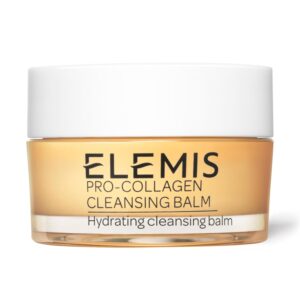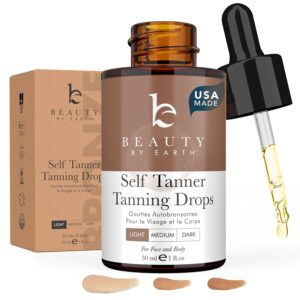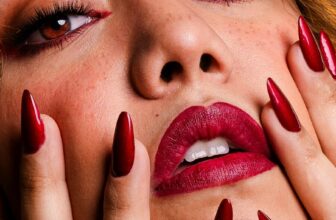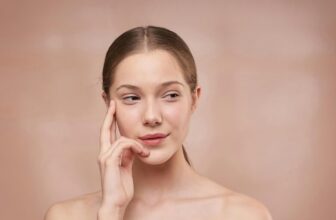
Table of Contents
Clean Beauty: The Game Changing Movement Taking Over the Beauty Industry
Introduction
There has been a significant surge in demand from consumers, who as opposed to before, are now much more aware of the ingredients that their skincare and makeup products contain. Over the years, this phenomenon, called “clean beauty,” has evolved as consumers have demanded safer, non-toxic, environmentally sustainable alternatives to conventional cosmetics. [This story originally appeared on: Clean beauty isn’t just a trend — it’s a real sea change in consumer awareness and industry standards. In this article, we will explore the origins of clean beauty, what makes it, how it has impacted the beauty industry, and what the future may hold for this radical movement.
What is Clean Beauty?
Clean beauty is defined by products free of nasty ingredients, yet prioritizing transparency, safety, and sustainability. While traditional beauty products often contain synthetic chemicals and potentially harmful preservatives clean beauty products emphasize natural, non-toxic, and ethically sourced ingredients.
But the challenge with clean beauty is that it doesn’t have a standardized definition. There are various definitions by different brands and organizations which can confuse consumers. Broadly, clean beauty follows these tenets:
- Paraben Free & Other Harmful Chemicals Free: FTree’s cosmetic formulations are free from parabens, sulfates, phthalates, synthetic fragrances, and mineral oils
- Transparency: Comprehensive listing of ingredients and sourcing details.
- Sustainability: Recyclable packaging and responsibly sourced ingredients.
- Cruelty-Free: Does not test on animals, and usually uses vegan ingredients.
Clean Beauty: Its Origins and Evolution
Clean beauty is not a new concept — it derives from ancient practices. Traditionally, civilizationss employed natural components like honey, aloe vera, and essential oils in their skincare and cosmetic products. As industry expanded, synthetic chemicals replaced the “natural” ingredients in cosmetic formulations despite the safety and environmental impact concerns they raise.
The modern clean beauty movement began gaining momentum in the early 2000s with the increased knowledge and awareness around cosmetics, as well as scientific research and advocacy from environmental and health organizations. As consumers became more aware of the dangers some chemicals pose in cosmetics, the demand for clean alternatives increased. That’s what gave rise to the indie beauty brands that prioritized safe, natural, and sustainable products. Even mainstream beauty giants have jumped on the clean beauty bandwagon, reformulating their products and introducing clean beauty lines.
Clean beauty: The science behind the trend
Scientific research revealing potential risks of ingredients found in some cosmetics is one of the main drivers of clean beauty. For example:
- Parabens, which are widely used as preservatives, have been associated with hormone disruption.
- Phthalates, used as: a softener in some fragrances and plastic packaging, have been linked to reproductive health problems.
- Sulfates, common ingredients in shampoos and cleansers, can remove natural oils from the skin and scalp, causing dryness and irritation.
As awareness of these dangers increases, consumers are paying closer attention to ingredient lists and seeking safer options. To responsibly provide safe and effective products, clean beauty brands commonly use naturally derived preservatives like rosemary extract and vitamin E to replace synthetic chemicals.

Fragrance-free in Clean Beauty
The clean beauty movement promotes products with naturally sourced and non-toxic ingredients, offering effective skin care without the harmful ingredients. There are some favourite ingredientes such as:
- Hyalouronic Acid: Powerful hydrator that prevents moisture loss from the skin.
- Vitamin C: A powerful antioxidant that brightens skin and minimizes signs of aging.
- Bakuchiol: A natural alternative to retinol, offering anti-aging benefits without irritation.
- Plant-based Oils: Jojoba, rosehip, argan oils that draw moisture and protect your skin.
- Botanical extracts: Ingredients such as chamomile, green tea and aloe vera soothe and heal the skin.
Sustainability and Clean Beauty
Sustainability is an essential component of the clean beauty movement. Most clean beauty brands focus on eco-friendly packaging, bio-degradable formulations and sustainable sourcing practices. Important sustainability practices are:
- Plastic-Free and Refillable Packaging: Brands like Fenty Skin and Kjaer Weis use refillable products to minimize waste.
- Upcycled Ingredients: A few brands utilize food industry by-products (like coffee grounds or fruit peels) to make sustainable skincare solutions.
- Water-Free Beauty: Waterless formulations are on the rise as an effort to minimize water usage while delivering more potent, powerful products.
Certifications and Regulations: Mandatory Compliance
As clean beauty has taken off, several organizations have created certifications to help consumers spot actual clean products. Here are some of the most well-known certifications:
- EWG Verified: Products that avoid harmful chemicals and meet strict safety standards.
- Leaping Bunny: The “cruelty-free” standard that ensures products aren’t tested on animals.
- USDA Organic: Means the ingredients are grown organically without synthetic pesticides or fertilizers.
- COSMOS Organic and Natural A European certification for organic and natural cosmetics.
But the beauty industry still has a long way to go in terms of clearer regulations، to be certified the way other industries do. There are lax regulations for cosmetics safety by the FDA, which has resulted in conflicting marketing claims. Critics ask for more disclosures and more stringent regulation to protect consumers.
Clean Skin Club Clean Towels XL™, 100% USDA Biobased
The Challenges That Clean Beauty Faces
Clean beauty rarely comes without growing pains, however. The key challenges include :
Lack of Standardization: The term “clean beauty” is not legally defined. It allows for “greenwashing,” when brands sell you on a clean label that they aren’t actually following.
Product Efficacy: There are a number of myths about clean beauty. Yet improvements in green chemistry and natural formulations are showing otherwise.
Higher Costs: Many clean beauty products are often more expensive than traditional cosmetics, because of ethical sourcing, organic farming practices, and sustainable packaging.
Limited Shelf Life: Some clean beauty products lack synthetic preservatives, resulting in a shorter shelf life, while others must be refrigerated or carefully stored.
The Future of Clean Beauty
As we bring you the newest and latest development in clean beauty, we see nothing but new horizons ahead. Some emerging trends include:
Biotechnology in Skincare — Seeing new lab-grown ingredients that mimic natural compounds but are more sustainable.
Waterless Beauty – Solid and powdered versions of products that conserve water and keep products viable longer.
Inclusivity in Clean Beauty – More brands are expanding their shade ranges, and chemists are creating products for diverse skin types and tones.
Tightened Regulations: -As the demand from consumers keep surging, governments might start implementing more stringent cosmetic safety regulations.
Conclusion
What is clean beauty, and why is it more than just a trend? Clean beauty is a move toward safer, better-for-you, and more sustainable and ethical beauty. The growing demand of informed consumers for transparency, non-toxic ingredients and eco-friendly products is showing no sign of slowing down. Though hurdles persist, the Dior’s of the world barrelling in on the clean beauty movement are an unequivocal yes. Expect a kinder, gentler future.
Consumers drive the clean beauty movement by making choices that lead the industry to prioritize safety, sustainability, and ethical practices. As the industry grows, we can expect the beauty of tomorrow to be cleaner, more open and inclusive in ways we likely have never seen.








